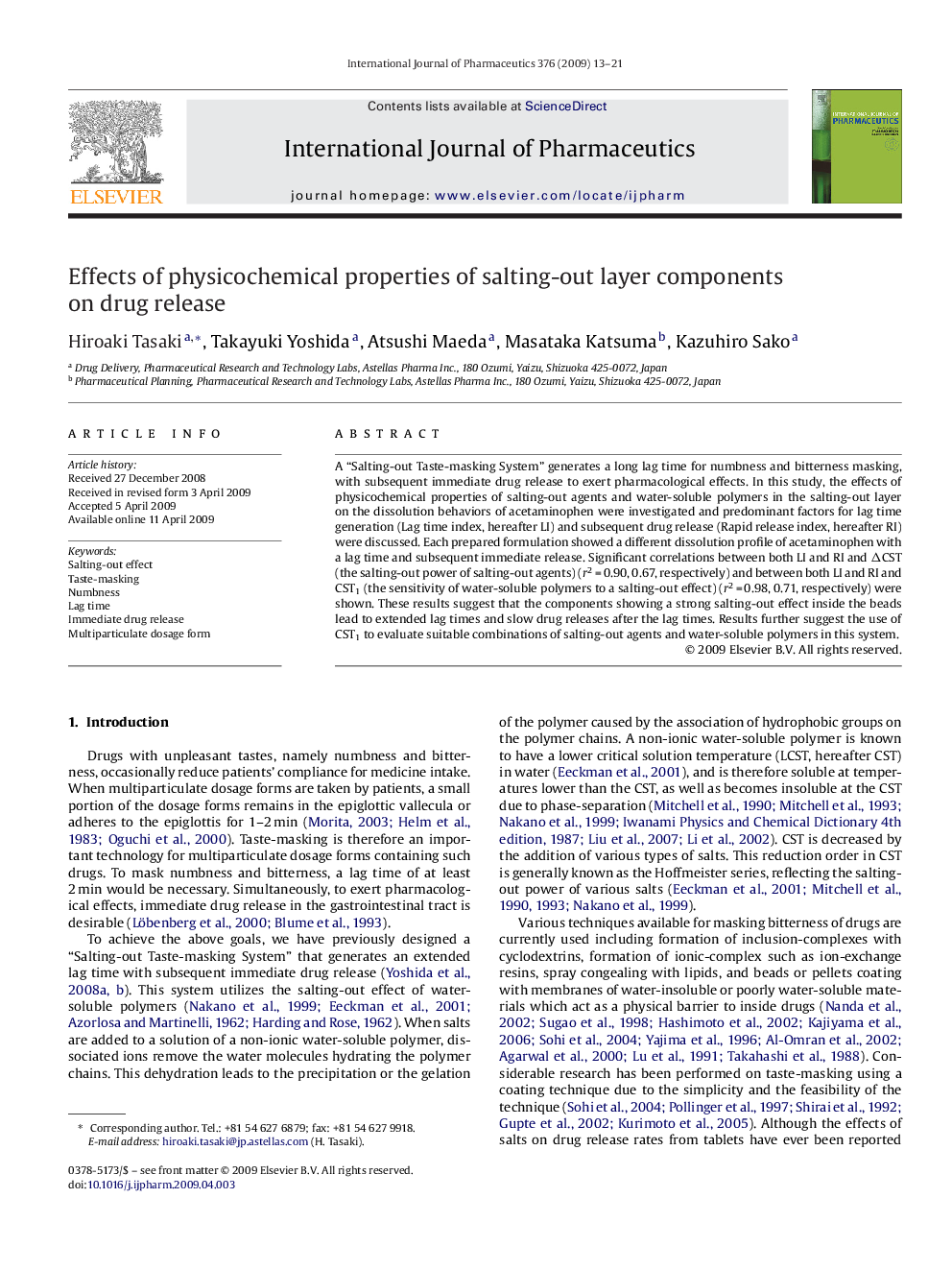| Article ID | Journal | Published Year | Pages | File Type |
|---|---|---|---|---|
| 2504714 | International Journal of Pharmaceutics | 2009 | 9 Pages |
A “Salting-out Taste-masking System” generates a long lag time for numbness and bitterness masking, with subsequent immediate drug release to exert pharmacological effects. In this study, the effects of physicochemical properties of salting-out agents and water-soluble polymers in the salting-out layer on the dissolution behaviors of acetaminophen were investigated and predominant factors for lag time generation (Lag time index, hereafter LI) and subsequent drug release (Rapid release index, hereafter RI) were discussed. Each prepared formulation showed a different dissolution profile of acetaminophen with a lag time and subsequent immediate release. Significant correlations between both LI and RI and ΔCST (the salting-out power of salting-out agents) (r2 = 0.90, 0.67, respectively) and between both LI and RI and CST1 (the sensitivity of water-soluble polymers to a salting-out effect) (r2 = 0.98, 0.71, respectively) were shown. These results suggest that the components showing a strong salting-out effect inside the beads lead to extended lag times and slow drug releases after the lag times. Results further suggest the use of CST1 to evaluate suitable combinations of salting-out agents and water-soluble polymers in this system.
